Hello folks, and welcome back to the column that explores the elements of the casual for readers everywhere. I regularly try to wrack my brain about fun casual stuff that I have not written about before. That’s where my recent art article came from, or my token article from a while back. That is also where today’s article comes from.
In Five Color, there has been a long and respected history of re-arting your cards. When you re-art your card, you are adding or deducting from the published art in one of many ways. You might be adding a new spin on the art, or you might be enhancing the color in a picture.
What my playgroup began to do was to re-art by deduction instead of adding more. You’ll see what I mean later on today.
With an established history of re-arting cards, I thought it would be fun to take a Thursday here and show some of the cards that my playgroup has done over the years. You can see the evolution of the playgroup over time. Perhaps the re-arting will give you a better appreciation for the original art, or perhaps you will get some ideas here.
I began by sending out a call to my fellow Magic players and asking for images to be taken of their re-arted cards. The result is here, and I hope you like it. Without further ado, let’s see some art!
Several people in my playgroup helped in building these images. Aaron did the majority of the work getting and finding images, but Don and Jason helped as well. Although I wrote the article, compiled the images, and re-arted a couple myself, I do want to thank Aaron, Don and Jason for their help in constructing this article, especially the images.
Our playgroup saw various re-arts online and decided to try it out. At first, we tried to enhance existing art. Let’s take a look.
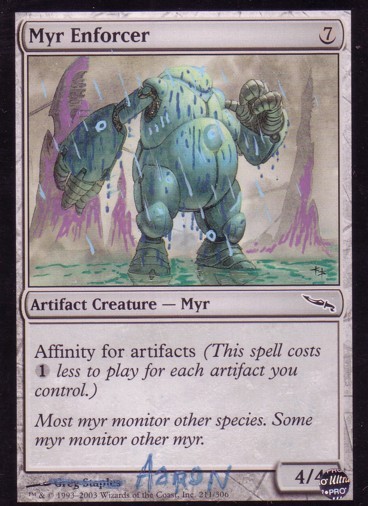
As you can see, here we have a re-arted Myr Enforcer. You’ll note that the original art for Myr Enforcer does feature it standing in rain, with it hitting the Enforcer, and in places, dripping off. This re-arting enhances the rain aspect by using gel pens to bring out the water elements of the piece. It was one of the earliest re-arts we did, and it shows. Looking back at it, it doesn’t look that good.
This next piece also shows our early stuff, and this one was also done by Aaron.
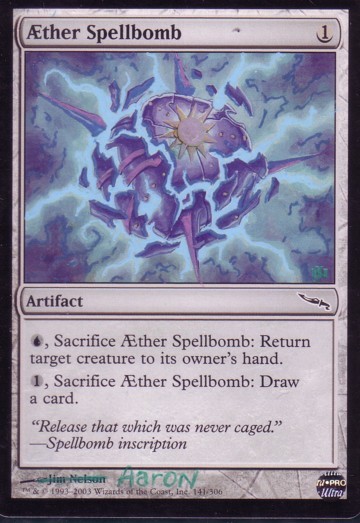
Again, you can see that the idea was to enhance the existing art by emphasizing the shattering action of the Aether Spellbomb. The result is a really interesting piece, but again, I just am not sure that it looks as good upon further inspection. We liked these at the time, but now I don’t see them as an improvement.
If enhancing the art of the card is something that appeals to you, allow me to make a few suggestions. First, pick up a pack of colored gel pens from a store. You want the high quality gel pens. Gel pens have a thick paint-like substance that really works well on the cards. Make sure you get good gel pens, because bad ones can scratch the card and not paint it. The best ones are those that you can smoothly use to mark the card.
Our playgroup began to move from basic re-arting very quickly. Here is one of the earlier examples of the direction in which we moved.
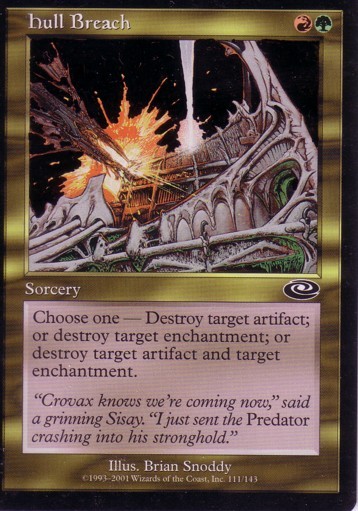
As you can see, here we have removed the background of Hull Breach and blackened it in. There is not much to the background, just a salmon colored sky, so this does not really change the art much. The result is a much more striking image. This re-art was really popular among our playgroup because it did not change or enhance the colors, so much as it made you focus on the image itself. We continued that theme in the next picture.
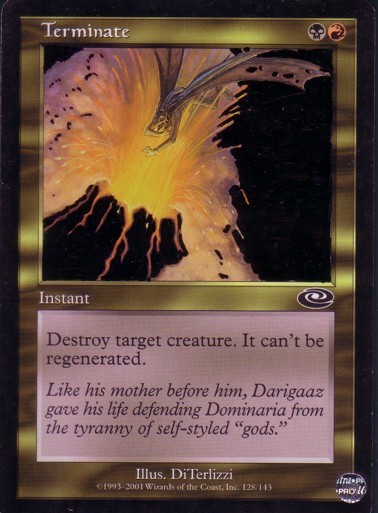
Here is a Terminate with parts of the art once again blacked out so that you can concentrate on the actual art. The background was blackened, as well as the crater itself, leaving you the lava and the action in the art, but removing the rest. The result can be quite focusing, as you have little else to look at. The next piece was another evolution in our playgroup’s re-arting.
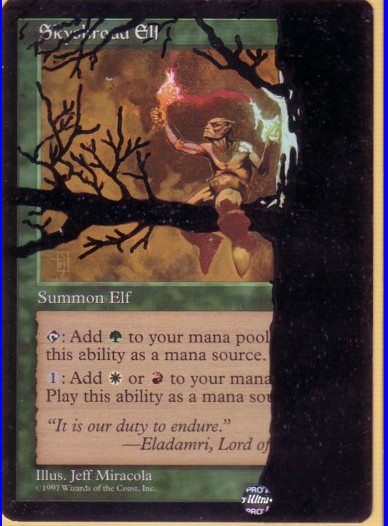
Here we have a Skyshroud Elf with blackened art on the tree and branches, but the artist, (who I believe was Aaron) continued to add branches and the tree outside of the art box. This was a revolution for us, because it allowed us to start playing with things in the entire card.
I have to set up the next piece of art. I believe I was the one who did this one. There is a card in Unhinged called Stone-Cold Basilisk. If an opponent reads the text of the card, then they are stoned until the end of the turn. That means they cannot play spells or abilities. I thought it would be neat if you could force someone to read the text, so here is my contribution to the evolution of our group’s re-arting.
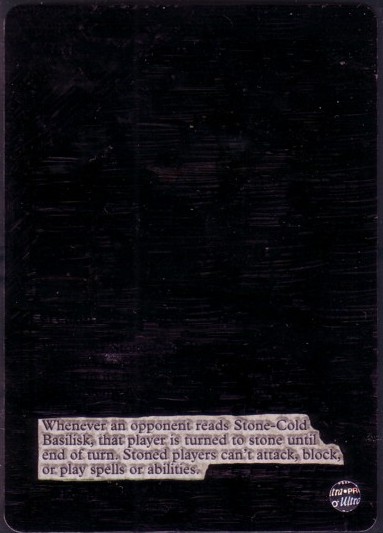
As you can see, I blacked out everything except a section of the text. When I played it, people would ask, “What’s That?” Then I would hand it to them and they would read it. Boom, stoned. Gotcha.
With a fully blacked out card now in sight, the next evolution of our playgroup’s re-arting was to combine these various styles in a card that did everything it could to focus on the art alone.
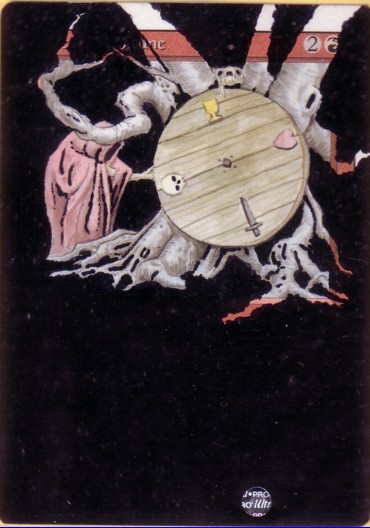
Here is an enhanced Wheel of Fortune, with most of the card blacked out, but the tree sort of continuing through the sides of the card. It is neat and interesting, but from there, it is an easy slide to fully blacked-out cards, except the art.
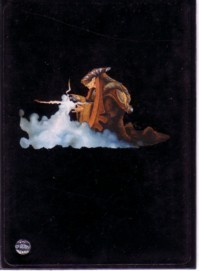
Here is a Mana Leak. With just the action of the art left on the card, the result is very interesting. I really like this way of re-arting cards. Let me show you some others.
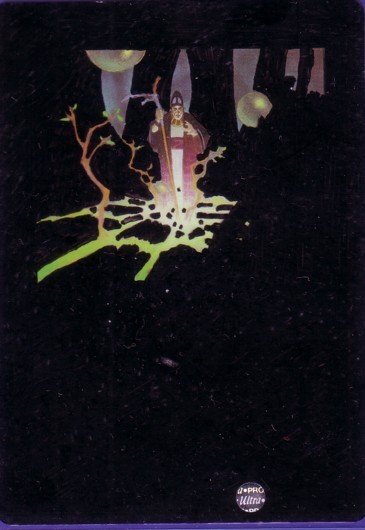
This is a beautiful Land Grant, with various cracks in the art being kept.
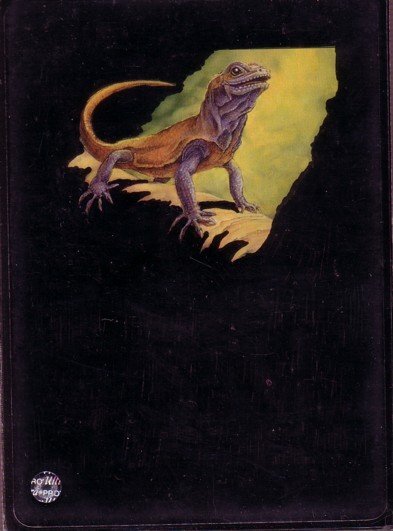
Another example of keeping just a bit around it is this Basking Rootwalla. The sunlight that illuminates it remains, and the result is a spotlight on the Rootwalla that looks gorgeous.
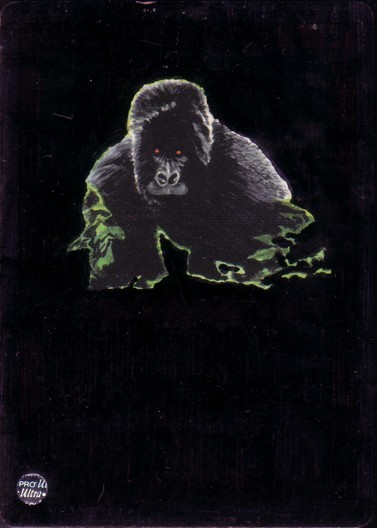
I am not the biggest fan of the Kird Ape art to begin with, so focusing on it doesn’t strike me as that good either, but perhaps you love the old artwork.
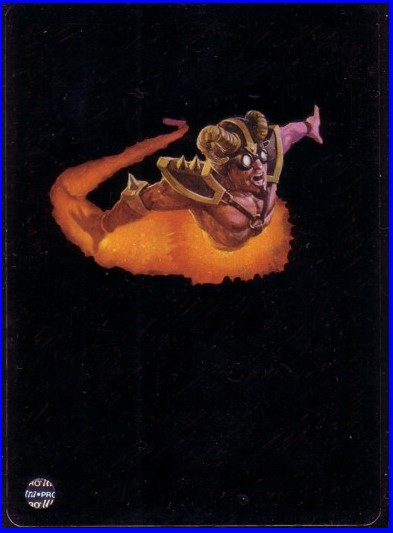
Here’s a Reckless Charge.
Now I think these look really good, and it gives you some ideas. However, we had one final evolution in our group, and I’ll show it to you. Aaron was struck by the art in Rushwood Dryad and thought it would make a good subject for our treatment. He added one thing that changed the group. Here it is.
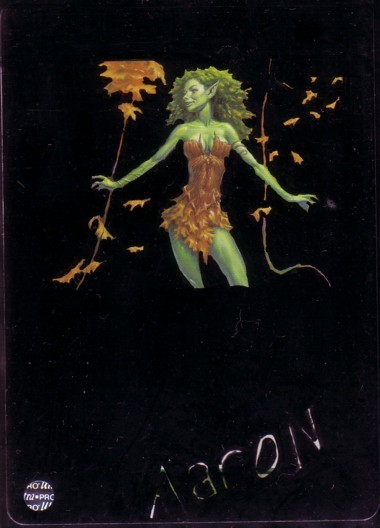
As you can see, he decided to sign his name at the bottom. The result was a blackened card except for the art and a word at the bottom. Once we figured out that technique, the doors blew off. Here are some of the later arts Aaron and others came up with.
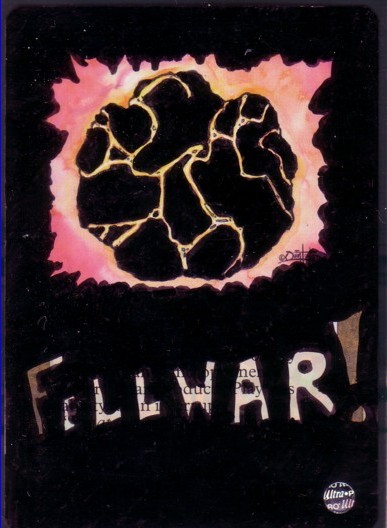
Fellwar Stone is a classic card in casual, and enhanced, it remains interesting.
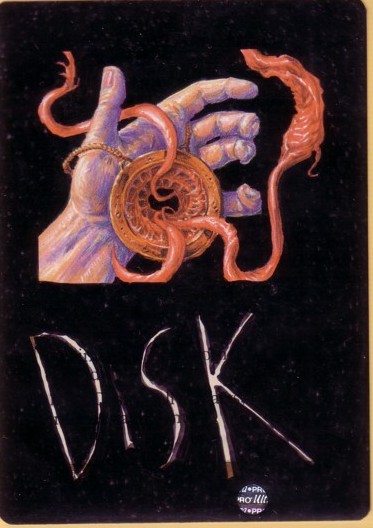
Another example of a card that everyone knows is Nevinyrral’s Disk, and it also looks very fetching blacked out, and with a word to tell you what it is.
Here are the Seals of Cleansing, Removal, and Doom.
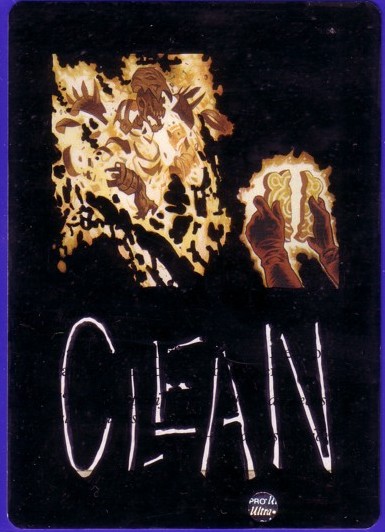
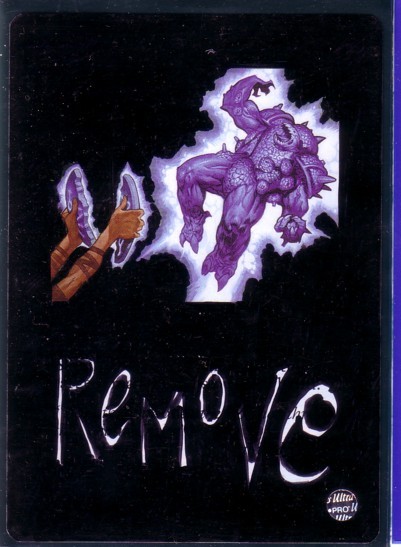

And the result is a very interesting look, right?
The next thing that happened was that cards were made that commented on the card in question. Let me give you an example. Here is a Trinket Mage.
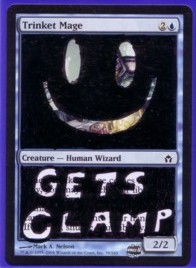
As you can see, it gets Skullclamp. Sure, you could get something else with it, but you don’t. You get Clamp.

Here is a Decree of Justice with blackened art and For Great Justice in the art box. I think it’s really funny. I believe Jason did this one.
Our final piece I would like to leave you with was a card given to Don as a present for his birthday. It was done in multiple steps, so let me show it to you.
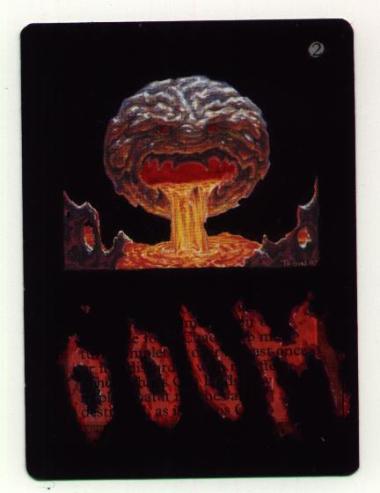
As you can tell, it is a blackened Chaos Orb. The main imagery as well as the casting cost were left on the card. Then Aaron marked over the bottom in red. Finally, after that had dried, he blackened it as well until all that was left was the fiery DOOM at the bottom. The result is a very strong piece and a nice gift to one of our fellow players.
I hope that you have enjoyed this little jaunt through my playgroup’s re-art. Hopefully some of it will catch your eye and you will begin to deface your own cards. May all of your re-art projects look good.
Until later…

